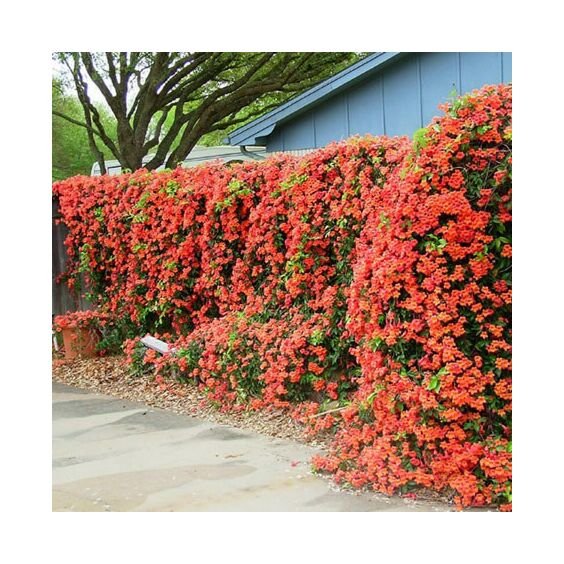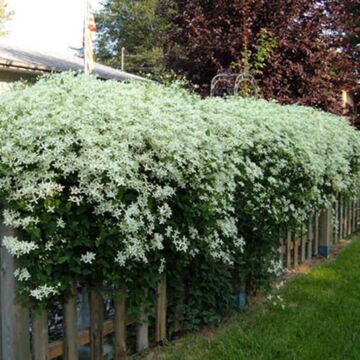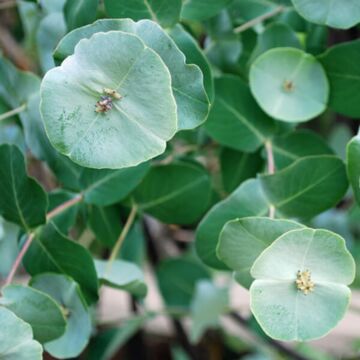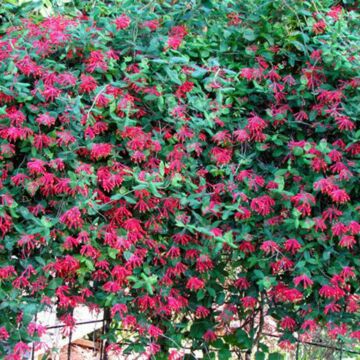
Growing zones
See Zone Map >Status: In stock
With its robust growth and vibrant flowers, the trumpet vine offers more than just aesthetic appeal—it supports local ecosystems and provides a haven for the following pollinators:
- Sun, Part Sun/Shade
Mature Plant Size (H x W): varies
Bloom Season: Summer
- Attracts Bees
- Attracts Birds
- Attracts Butterflies
Planting and Care for Trumpet Vines (Campsis radicans)
This guide provides essential advice on how to successfully plant and nurture your Trumpet Vines. Follow these tips to encourage vibrant growth and abundant flowering.
Preparation
- Trumpet vine is easily grown and thrives in both full sun and partial shade.
- While it prefers a nice well-draining soil, trumpet vine flower is resilient enough to adapt to nearly any soil and will grow readily.
- Choose a suitable location prior to planting and a sturdy support structure.
- Planting too close to the home or outbuilding could result in damage from the vine’s creeping roots. They can work their way under shingles and even cause damage to foundations. Be sure to plant the trumpet vine some distance from the home.
- A trellis, fence, or large pole works well as a support structure when growing trumpet vines. However, do not allow the vine to climb trees as this can lead to strangulation.
- Trumpet creeper is a vigorous grower. Water only as needed and do not fertilize.
Opening Plant Material
- Bare Root - Cut open the bundle (top and roots are tied) and separate all the plants. Soak roots in buckets of water until planted. Each plant type will be labeled separately for identification. Do not expose the roots to sun. They should never dry out. Keep roots covered. All bare-root plants must be trimmed when planted.
Planting Bare Root
- Plant bare-root plants in the fall. Ensure the ground is not frozen and remains workable. Delay planting if a hard frost is expected.
- Dig a hole at least 6" wider and the same depth as the root mass. The crown or graft of the plant should be slightly higher than the ground level where it was grown at the nursery.
- Trim off the broken roots and branches.
- Place fertilizer packets in the hole (if purchased). Do not place other fertilizers in the planting hole. *Use our recommended fertilizer.
- Spread the roots and fill halfway with soil, then water until soil settles completely saturating the soil and planting pit.
- Re-adjust plant and fill the hole with the rest of the soil.
- Back fill the balance of the soil and water well.
- Check out our Handling and Planting Guidelines for illustrations on planting.
Planting Groundcovers/Vines
- The planting bed for the trumpet vine should consist of 6–8" of topsoil, well-mixed with approximately 2" of peat moss.
Pruning - After Planting
- Bare root: Prune ALL bare roots to reduce transplant shock and ensure success. Pruning should occur either before or as soon after planting as possible. All pruning should be done with sharp pruning shears.
Pruning - Throughout the Season
- The only maintenance you’ll need to perform is pruning. Trumpet vine requires regular pruning to keep it under control.
- Pruning takes place in early spring or fall. Generally, spring is preferable and may be severely pruned back to just a few buds.
Watering - After Planting
- Plants typically take approximately six weeks to establish new roots in your soil. During this period, water plants as often as every two to four days at the start and at least a minimum of once per week.
- Beyond the six-week establishment period, water once per week, unless rains occur.
- Stick your finger into the soil around 3” to check for moisture.
Watering - Throughout the Season
- After the first season, plants should only be watered during extended periods without rain.
- How do you know if your plants need water? The easiest way to tell is to touch the soil around the roots. When it’s moist, there’s no need to water. If it’s dry, give it a good soaking with the hose end (no nozzle), watering the soil only, not the leaves.
- Stick your finger into the soil around 3” to check soil moisture.
Frequently Asked Questions
Explore the common queries about Trumpet Vines below and learn gardening tips and expert advice.
How tall can Trumpet Vines grow?
When allowed to climb, Trumpet Vines can reach heights of 30–40 feet, making them an excellent choice for covering structures or fences.
Do Trumpet Vines require a lot of maintenance?
They’re relatively low-maintenance. Regular pruning, usually in early spring or fall, helps keep them in check. Watering should only be done as needed, and fertilization is not necessary.
Can Trumpet Vines be grown in containers?
While Trumpet Vines are typically grown in the ground, they can be cultivated in large containers with proper support.
What should I do if my Trumpet Vine doesn't bloom?
Lack of blooming can be due to insufficient sunlight. Ensure your vine receives enough sunlight for optimal flowering.
Do Trumpet Vines have any special care requirements in winter?
Trumpet Vines are generally hardy, but in colder climates, you may want to provide extra protection in the form of mulch around the base to insulate the roots.
Explore Trumpet Creeper Vines
Our vines thrive on our extensive acreage in Waterloo, Wisconsin, ensuring their health and vigor. Enjoy a hassle-free online shopping experience with our dependable warranty and secure packaging. Have questions or need guidance? Contact us at [email protected] or 920-478-2121.
Planting & Handling Help
Download our Planting and Handling Guide below to plan for a successful arrival and install of your plants. Be sure to water all plants as soon as they arrive and every day until you’re ready to plant. Keep any bare root bundles in a shady, cool spot with the roots covered at all times.


Learn More
Watch our videos on handling bare root plants, how your order is prepared for shipment and more.


Plant Sizing
What is the difference between Containers, Grow Bags, Bare Root, and Balled & Burlap (B&B)?
Shipping Times


Our FedEx and local shipping times depend on two factors, one is by the region and the second is the type of product being shipped. For example, small fruits are only shipped in spring, but majority of our perennials are shipped from spring until fall. Keep in mind the dates below act as a general guide. Due to unpredictable weather, staffing, inventory and industry demands these timelines can change. Therefore, we cannot guarantee any of these times.
Shipping Dates by Region*
Northern Cold Region: April 22nd - November 7th
Northern Region: April 15th - November 7th
Middle Region: April 1st - November 7th
Southern Region: March 15th - November 7th
Local Delivery (small radius from Waterloo, WI): April 22nd - November 7th
Shipping Dates by Season*
Spring Shipping: Region Start Date (above) - May
Fall Shipping: September - November
Due to unpredictable weather, these times may vary. Some varieties are exceptions due to heat and plant health reasons. Enter your shipping zip code at the top of this page and be sure to check the shipping information on each product before you add it to your cart. If the product is too large or restricted in your state, you will not be able to checkout with that item in your cart.




